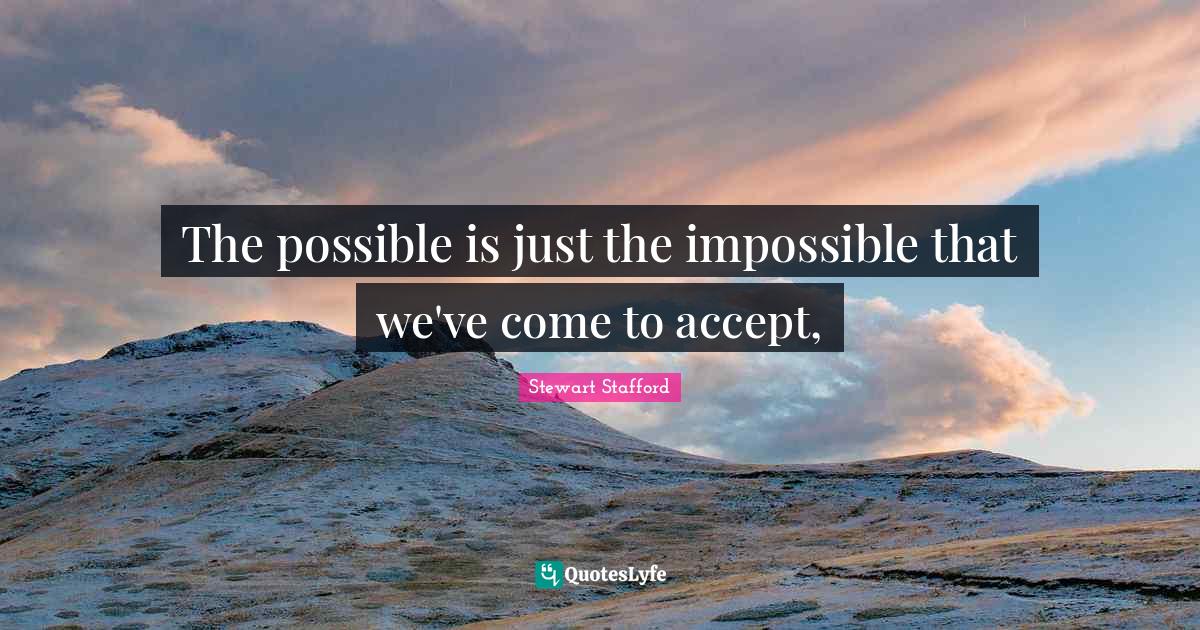The Benefits of Regret
I can't believe it's already the end of December. It seems this past year was both unending and insanely short. (Or is that just me?) I introduced the blog's theme of motivation in March and--while it hasn't been a full year--it seems fitting to look back at that theme and start planning for 2022. (It will probably be March again before I'm able to write 2022 without either first writing 2021 or feeling the need to double-check that I'm not making up a year).
My WriteCast cohost, Claire Helakoski, will be posting an episode focused on SMARTER goals at the beginning of next month and the discussion we had got me thinking about how we can use reflection--as well as careful planning for the future--to ensure we move forward in our most important goals. In particular, I'm wondering if there's a way to reframe supposed 'failures' and regrets so they can propel us in a positive way rather than holding us back.
Much research has been done on the ways thoughts impact reality. As productivity coach Michael Hyatt (2021) put it, "we tend to experience what we expect...our success ultimately depends on our ability to tell the difference between reality and the story we are telling ourselves...when we believe we can't, we don't. The difference is all in our heads" (p. 18). Similarly, author Stewart Stafford argued, "the possible is just the impossible that we've come to accept" (QuotesLyfe.com). Basically, how we frame things in our own minds is important.
This is why I think it would be a good idea to (re)frame how we might usually think about our past mistakes, regrets, and anything we might consider a failure. Some of my favorite motivational quotes run along the lines of, 'failures are actually opportunities for learning' but at times this can seem cliché or flippant. Personally, I find these quotes inspiring in general, but less helpful in times I find myself overthinking things I've done or avoided doing. If you're like me, hearing "don't think about pink elephants" instantly conjures images of those animated "heffalumps" from "Winnie the Pooh and the Very Blustery Day" (or some other version of elephants in shades of faded red). And quotes like "we learn from failure, not from success", at a time when I'm overthinking, read as platitudes rather than sound advice (Stoker, 2000, p. 103).
Research has also found that attempting to 'just get on with things' rather than allowing yourself to deal with regret is actually more damaging than we might think. Janet Landman (1993), a psychologist from the University of Michigan posited, "Regret may not only tell us that something is wrong, but it can also move us to do something about it" (p. iii). And University of Illinois researchers Neal Roese and Amy Summerville (2005) conducted an in-depth study about regret and found "people's biggest regrets are a reflection of where in life they see their largest opportunities; that is, where they see tangible prospects for change, growth, and renewal" (p. 1273). Basically, we tend to particularly dwell on mistakes we've made where we are most easily able to determine what misstep preceded, or what alternative action could have likely changed the outcome for the better.References
Hyatt, M. (2021). Your best year ever. Michael Hyatt & Company, Inc.
Landman, J. (1993). Regret: The persistence of the possible. Oxford University Press.
QuoteLyfes.com. (n.d.) Steward Stafford quotes. https://www.quoteslyfe.com/quote/The-possible-is-just-the-impossible-that-258026
Roese, N. J., & Summerville, A. (2005). What we regret most...and why. Personality and Social Psychology Bulletin, 31(9), 1273-1285. https://doi.org/10.1177/0146167205274693
Stoker, B. Dracula. Dover Publications, Inc.
Kacy Walz is a writing instructor from St. Louis, MO. She is currently working on a PhD in Literature from the University of Missouri. Along with her work on the blog, Kacy also cohosts the Walden Writing Center podcast. She enjoys piña coladas and getting caught in the rain.
.png)
How to Find and Keep Your Confidence as an Academic Writer
How does confidence impact writing and the motivation to write? What adds to our confidence when it comes to writing, and what diminishes it? How can a writer maintain, develop, or rebuild confidence in their writing skills?
To begin with a definition (because it's probably best to know what the thing is before we discus how to increase it!), Merriam-Webster (n.d.) described confidence as "a feeling of or consciousness of one's power" and "faith or belief that one will act in a right, proper, or effective way." In other words, confidence is trusting that we are capable of accomplishing a goal we've chosen to pursue or a task we've been assigned. Confidence is feeling good about our ability to be who we want to be and do what we want to do.
Reciving a disappointing grade, or criticical feedback that doesn't seem helpful understandably brings us down, especially if our confidence when it comes to writing is already shaky. Also, if we feel we're alone in the writing process, or like we don't know enough about academic writing as a genre to be able to do it well, we definitely won't be enjoying the good feelings confidence brings.
But there is hope. (We definitely wouldn't publish this post if we didn't think so!) When it comes to academic writing and APA style, the Walden WritingCenter’s website offers a number of resources to help students learn more about the expectations involved. We also strongly encourage you to reach out to your professors to clarify what is required of you for any assignments that seem confusing or unclear, or to discuss any feedback they provide. Finally, forming meaningful relationships with your fellow students--for instance, creating spaces where you can vent to, commiserate with, and encourage each other--can help keep those feelings of loneliness at bay.
Reference
Merriam-Webster.
(n.d.). Confidence. In Merriam-Webster.com dictionary. https://www.merriam-webster.com/dictionary/confidence
Grete Howland is a writing instructor who's been with the Walden Writing Center since 2019. Before joining the Writing Center, Grete taught English and creative writing to middle and high school students. When she's not working with words, Grete loves paddle boarding, running, wine tasting, and hanging out at home with her husband and dog.
Keep Your Motivation on Track with the Pomodoro Technique
 - 25 minutes work
- 25 minutes work
- 5-minute break
- 25 minutes work
- 5-minute break
- 25 minutes work
- 5-minute break
- 25 minutes work
- 20-30-minute break
- 5-minute break
- 25 minutes work
- 5-minute break
- 25 minutes work
- 5-minute break
- 25 minutes work
- 20-30-minute break
Here are some key factors that I find make me more successful in implementing the Pomodoro Technique:
Tailor the System
I recommend that you experiment with the system and find the time spacing that works best with your own neurology. If 25 minutes of work and a 5-minute break doesn’t quite fit, you may find you work better in 30-minute chunks of time with 10-minute breaks. Maybe you will need to write for 10 minutes and take a 3-minute rest. Don’t be afraid to work the system to meet your working style.
Treat Yourself
A reward system tied to achieving your goals might also be helpful. Some folks are motivated sufficiently by the act of checking items off a to-do list, but I confess that I like a more tangible reward. The short break is a type of reward, but If I have a particularly challenging day where I cannot find the motivation to stay on task, I may add more rewards into my short breaks to keep me interested in pushing forward. In a five-minute break, I can do a quick game or dance party with one of my children, which is not only fun, but allows me to reconnect with family before getting back to writing. Throughout the day, I track how many Pomodoro sets I have completed, and if I have met my daily writing goal, I have a small reward like a square of dark chocolate and a cup of Earl Grey tea. When I meet a weekly writing goal, I want a more significant reward like a 2-hour binge of my latest favorite show or a grown-up playdate (NO KIDS!). What brings you joy? Use that to reward yourself for getting the job done.
Tackle Distractions
During your work time, set yourself up for success by keeping distractions at bay. Mute your phone, don’t answer the door, find a quiet space or put on sound-canceling headphones, and take advantage of tools and apps on your computer (such as Microsoft’s Focus Assist or the Stay Focusd Chrome extension) to avoid the distractions of instant messaging, social media, and email notifications. If random thoughts intrude that you can’t ignore, quickly jot the ideas down in a notebook to deal with later and get right back on task.
Don’t overthink the Pomodoro system, or you might plan yourself into procrastination. You don’t need the perfect timer, a semester time grid, or a reorganized workspace to get started. Any digital or analog timer will do, so you can start right now. What can you write about for 25 minutes? I hope you’ll report back on how it went, maybe over a cup of Earl Grey.
.png)
Never miss a new post; Opt-out at any time
"Sprint" Towards Motivation!*
Sometimes just getting started writing
can be the most daunting task. Even though I am an experienced writer, I still
struggle when I start a writing project. However, once the first few sentences
are on the page, I can generate ideas much more easily, and I experience what
psychologist Mihaly Csikszentmihalyi (1997) calls flow. In a state of flow,
I lose myself in the joy of writing and forget about time and outside pressures.
Flow is different than just enjoying an activity like binge watching a series on Netflix or eating a favorite food. You cannot engage in flow as a passive participant. Flow is experienced from the joy of actively producing (Csikszentmihalyi, 1997), and it is something that has been studied in education and writing, but also in sports such as archery, golf, and billiards (Gute & Gute, 2008). Athletes who sprint build muscle recovery ability and increase their resistance to fatigue (Girard et al., 2011); similarly, writers who engage frequently in short bursts of writing develop fluency and the ability to focus quickly on a writing task (Literacy Information and Communication System, n.d.). The flow states kicks in when the writer or athlete has formed the habits, knows what to do, and engages fully in act of writing itself.
So how do you get from the monolithic
blank page to an enjoyable state where the writing you have planned becomes a
natural expression rather than halting stumbles of a few words that you type
and delete in fits of frustration? Although achieving a state of flow does
require mindfulness and experiencing a challenge, researchers have found a
positive correlation between a perception of encouraging feedback and the
experience of flow. This indicates that the more people trust their ability to meet
a challenge, the more likely their performances are to meet their expectations
(Gute & Gute, 2008). Turning off your inner critic and writing boldly and
fearlessly, giving yourself permission to make mistakes that you know you can
deal with later, can help open the pathway to flow.
Many writers experience difficulties
getting started on writing projects in isolation. Once more, science provides
insight into why this may be true, as studies conducted on flow have found that
social flow, or flow experiences created in a group setting, were rated as more
enjoyable than solitary flow (Salanova et al., 2014; van den Hout et al., 2018;
Walker, 2009).
Student writers can apply this research in a practical way. Using in-person café writing groups and social media to create a sense of community in writing, without any judgment on the quality of the work, can be valuable techniques (Mewburn et al., 2014). This is where the social media challenge to “writing sprints” comes in.
In a writing sprint challenge, the
goal of the activity is to write for a given block of time and report back only
on the number of words produced. Comparing sprint writing to longer intensive
boot camp or binge writing sessions,[1] studies have shown that frequent sprint
writing produces more in the long term (Friesen, 2014). In a sprint, writers
announce challenges or personal goals on social media such as Twitter,
Facebook, discussion boards, etc., and they can be set to any length of time. Some
find the structure of “sets” such as the Pomodoro method[2]
helpful, whereas others would rather sprint more spontaneously with their
writing.
Whichever method you prefer, publicly throwing down the gauntlet in a space where other writers can bear witness to the challenge (in a private writing group, on a class discussion board, or just on a Walden University Facebook page) is a great way to create accountability to just start writing. Using social media to your advantage rather than as a distraction can be a great source of motivation. These challenges can help you produce more writing than you would working alone. So, here’s a challenge: try a writing sprint sometime this week. Set a timer for 10-30 minutes and keep writing until it goes off. Once you get started writing, (especially if you know others are engaged in writing as well), you might achieve the rewarding flow experience that leads to the successful completion of your writing project.
References
Cirillo, F. (n.d.). Pomodoro
technique. https://francescocirillo.com/pages/pomodoro-technique
Csikszentmihalyi, M.
(1997). Creativity: Flow and the
psychology of discovery and invention. HarperCollins.
Friesen, E. L. (2014). Structures,
snacks, sprints, and socializing: Strategies to increase writing output for AT
practitioners. Studies in Health Technology and Informatics, 217,
788-791.
Girard, O., Mendez-Villanueva, A., &
Bishop, D. (2011). Repeated-sprint ability — Part I: Factors contributing to
fatigue. Sports Medicine, 41(8), 673–694. https://doi-org./10.2165/11590550-000000000-00000
Gute, D., & Gute, G.
(2008). Flow writing in the liberal arts core and across the disciplines: A
vehicle for confronting and transforming academic disengagement. The Journal
of General Education, 57(4), 191-222. https://doi.org/10.1353/jge.0.0026
Literacy Information and
Communication System. (n.d.). Increase the amount of student writing. https://lincs.ed.gov/state-resources/federal-initiatives/teal/guide/studentwriting
Mewburn, I., Osbone, L.,
& Caldwell, G. (2014). Shut up & write!: Some surprising uses of cafés
and crowds in doctoral writing. In C. Aitchison & C. Guerin (Eds.), Writing
groups for doctoral education and beyond: Innovations in practice (pp.
218-232). Routledge.
Salanova, M., Rodriguez
Sanchez, A. M., Schaufeli, W. B., Cifre, E. (2014). Flowing together: A
longitudinal study of collective efficacy and collective flow among workgroups.
The Journal of Psychology Interdisciplinary and Applied 148(4), 435-455.
https://doi.org/10.1080/00223980.2013.806290
Van den Hout, J. J. J.,
Davis, O. C. & Weggeman, M. C. D. P. (2018). The conceptualization of team
flow. The Journal of Psychology 152(6), 388-423. https://doi.org/10.1080/00223980.2018.1449729
Walker, C. (2009).
Experiencing flow: Is doing it together better than doing it alone? The
Journal of Positive Psychology, 5(1), 3-11. http://doi.org/10.1080/17439760903271116
[1] There has
been some conflation of the term “writing sprint” with what is actually a
“writing binge” where writers spent an intensive multiday period writing on a
single topic.
[2] The
Pomodoro method was pioneered by Francesco Cirillo (n.d.), where tasks are
chunked into 25-minute blocks of time, with a short break allowed, and then
another 25-minute block of time, followed by a short break, and this pattern
continues until 4 of the 25-minute blocks have been completed, and a 20-to-30-minute
break is allowed.
*The terrible, punny title of this post was crafted by the current project manager of the blog. Lauri should not be held responsible.
Lauri Barnes is a Writing Instructor at Walden University, and has worked in online writing centers since 2014. She has over two decades of teaching experience and loves supporting writers through the writing process. She is an aficionado of coffee, tea, mysteries, data, Star Wars, Doctor Who, all things nerdy and geeky, science, faith, kindness, and hope. She lives in the panhandle of Florida with her husband, daughter, two sons, and their cat.
.png)
Never miss a new post; Opt-out at any time
Motivation to Revise
Why Revise?
Revision is an opportunity to take the great thing
you wrote and make it better. And it can always get better! So,
if you like your work to really shine, revision is for you!
Not feeling like you have time to revise? Or maybe you just
feel like your draft is good enough already? Revision is still for you!
Doing a quick re-read can still help ensure that you hit all the main points
requested by your assignment prompt. It can also ensure that you remember to
cite everything and avoid plagiarism. Plus, even small steps at revising can
help you communicate more effectively and hone your writing skills!
How to Revise
It can be tough to open up that paper you just finished and say, ‘alright. Now let’s revise!;. It can feel discouraging. Or at least less than super exciting. But it doesn’t have to! Here are some revision strategies to help motivate you.
1)
Make a paper
review appointment. By making a paper review appointment, you will have the
opportunity to have someone else look over your work and provide feedback and
next steps for revision! This takes some of the mental work and discouragement
away from the revision process 😊.
2)
Try a
reverse outline. Make bullet points of the main points in your document in
a separate document or side comments. Look these over and compare them with
your assignment—do you answer all the questions? Do you repeat yourself
anywhere? These are good areas to revise if so!
3) Take a break. Make sure to build in a day or two away from when your draft is due so that you can take a break from it and come back with fresh eyes. It can be really motivational to look at something fresh and remember all the great work you did, and things you want to fix or change will jump out at you more.
Still need more motivation?
If you’re still feeling the revision blues, check out some
of these resources and other approaches to revision:
·
In particular, I recommend the Writing
Goals module to help focus your revision ideas
·
Review some steps and tricks via our revising
webpage
·
Watch our Strategies
for Revising, Proofing, and Using Feedback webinar
What helps you revise? Let us know in the comments!
Claire Helakoski lives in Michigan with her family. Claire
has worked at Walden for over 5 years and you can read many of her previous
posts on the blog, as well as find her over at WriteCast
as a cohost.
.png)
Never miss a new post; Opt-out at any time
Consider Your Future Audience When Writing Gets Tough
 Grete Howland is a writing instructor who's been with the Walden Writing Center since 2019. Before joining the Writing Center, Grete taught English and creative writing to middle and high school students. When she's not working with words, Grete loves paddle boarding, running, wine tasting, and hanging out at home with her husband and dog.
Grete Howland is a writing instructor who's been with the Walden Writing Center since 2019. Before joining the Writing Center, Grete taught English and creative writing to middle and high school students. When she's not working with words, Grete loves paddle boarding, running, wine tasting, and hanging out at home with her husband and dog..png)
Never miss a new post; Opt-out at any time
Are You Hitting the Pandemic Wall Too?
When Kacy shared with me her vision for the blog in 2021, I
was excited to hear about the focus on motivation. As
I mentioned last September, productivity usually isn’t a problem for me. I
wrote that September post earlier in the pandemic, and
when I look back now, I realized I’m in an entirely different headspace now.
As we head into the one-year anniversary of COVID lockdowns, I’ve hit what I’ve
heard others refer to as the
pandemic wall. The
term “the pandemic wall” comes out of a Twitter
thread from NPR host Tanzina Vega (she talks about “pandemic burnout”), and
it refers to “the particular and sudden feeling of spiritual and emotional
exhaustion with life during covid times” (Judkis,
para. 7 ).
In reflecting on my waning motivation, I realized that the
tools that I had relied on in the past to help fuel my motivation just weren’t available to me anymore.
Last fall, I talked about how finding the right environment can help my
motivation. In the past, when I was feeling restless and unproductive, I would
often find a cozy coffee shop where I could get some writing or work done.
Finding a different space to center myself was what got me through my master’s
degree, and it’s been something I’ve relied on during my 10+ years as a remote
worker.
Of course, in this time of COVID, going to a coffee shop
just isn’t an option; it’s not realistic or safe, and so opportunities for
finding a new environment to help with my motivation are limited. I suppose I
could try moving from my home office to my kitchen, but of course I also don’t
leave my house during my down time, so I’m pretty sick of my kitchen right now
too. That strategy that had worked well isn't available to me right now, but
I also realized I’ve unknowingly found a few workarounds.
Recently, I’ve started using an app called Tomato
Timer. The app uses the Pomodoro
technique of alternating between focused work sessions and frequent breaks
(“pomodoro” is Italian for tomato). I find it incredibly helpful and satisfying
to watch the app count down the time until my next break, and I often find
myself trying to work a bit faster to get a project done before the timer ends.
The Pomodoro approach helps me push distractions to the side, since I’ll have a
break soon in which I can easily get more coffee, check Twitter, get more coffee, walk around a
bit, and get more coffee.
The other strategy I’ve started using is a daily meditation
habit using the app Headspace.
I’ve always wanted to be more mindful, and with my inability to focus recently,
I thought now might be the time to start building my meditation practice. I’ve incorporated
Headspace into my nightly routine before I go to bed, and I’ve started using
short 5-minute meditations during my Pomodoro breaks. It’s been a helpful way
to reset my focus, and while I’m still a novice, I’m going to continue to build
my meditation practice.
I in no way want to imply that the Tomato Timer and
Headspace apps are solutions for the impact of the global pandemic we are still
experiencing: we can’t time manage or meditate our way out of a global
pandemic. And, honestly, we should all be clear with ourselves that our
productivity probably won’t be the same as our pre-pandemic levels. It’s
okay to feel unfocused and to struggle with motivation—that struggle is not a
personal failing on your part; it’s a result of the world we live in right now
and is not your fault.
It has been helpful for me, however, to reflect on the ways
I’ve replaced my old strategies for finding motivation with new ones. Maybe
that same reflection can be helpful for you too. If you’ve felt unfocused and
unmotivated recently, consider where you’ve found motivation in the past. Is
there a new way you can replicate that strategy? What resources or tools do you
have at your disposal, however small they might seem? What support system can
you lean into? How might technology be a tool?
Share your thoughts in comments to this post, and good luck
out there, everyone. We will eventually be able to visit our local coffee shop
without worry.
Beth Nastachowski has been with the Writing Center since 2010, and she currently manages the center’s webinars, modules, and videos. She spends her time running after her son, husband, two cats, and dog in St. Paul, MN.
.png)
Never miss a new post; Opt-out at any time
Motivation: My theme for the Walden Writing Center Blog and life in general in 2021
My name is Kacy Walz and I've been a Writing Instructor at Walden University since the end of 2016. I've written a few posts for the blog in the past and, this year, I'm excited to take the reigns. I'm also excited to share the theme of 2021's upcoming posts: motivation.
Something that never fails to inspire me is working with Walden students and witnessing the incredible things they do in their scholarship and day-to-day lives. I'm so grateful for that and I believe that tapping into my work at Walden will help get me to the proofreading stage of writing.
Kacy Walz is a writing instructor from St. Louis, MO. She is currently working on a PhD in Literature from the University of Missouri. Along with her work on the blog, Kacy also cohosts the Walden Writing Center podcast. She enjoys piña coladas and getting caught in the rain.
.png)
March Live Webinars
It seems like each month is somehow both flying by (is it really already March??) and also taking forever. But a new month also means a new webinar schedule! We'd love to see you at a live webinar, but if the times don't work for you, you can always check out the recording in our archive.In this webinar, participants will learn from Writing Center Form and Style editors about the use of APA in doctoral capstones: Expectations, common errors, and resources for understanding more complex APA rules. APA Reference List Workshop Part 1: Top Overall Formatting Errors and How to Fix Them
|
Inclusivity in Academic Writing and APA: The Singular “They”
Last year, Walden University adopted the newest edition of the APA Manual, APA 7. While many rules stayed the same between APA 6 and APA 7, a few rules changed, including one that has caused excitement across the university: APA 7 officially endorses the use of “they” as a singular third-person pronoun (see Section 4.18 in APA 7).
What do I mean by the singular “they”? Essentially, writers can now use “they” to refer to one individual or many individuals, just like “you” can be either singular or plural. Here are a few examples of the singular “they” in writing:
While my boss provides regular employee feedback, they also take mid-year reviews seriously.
The respondent noted that they did not fully understand the question in the survey.
My daughter has appreciated their nonbinary student high school support group.
While the Writing Center has advised Walden students to use “they” as a singular pronoun since our 2017 Inclusive Language Policy announcement, APA 7’s endorsement means that the singular “they” has taken another step on its journey to mainstream use by entering Standard Academic English standards. The singular “they” is actually much older than you might think. If you’re interested in etymology like me, you can read the Oxford English dictionary’s comprehensive history of the singular “they,” which traces the first documented use of the singular “they” back to 1375.
The singular “they” also allows writers to avoid gender bias in various situations in their writing. For example, the singular “they” provides writers a way to avoid misgendering individuals when their pronouns aren’t known. For example, let’s imagine a situation in which we are able to gather in person again: Maybe a Walden student is attending an in-person residency, and in their reflection paper on the residency, they want to talk about someone who asked a question across the room in a session. The student doesn’t—and can’t possibly—know that person’s pronouns. In this case, APA recommends using the singular “they.” Similarly, if you’re writing about a hypothetical situation, use the singular “they” to avoid gender bias. Research shows that when nouns are gendered (as is the case in languages like Spanish and German), speakers describe objects differently based on their gender. The language we use does impact our perception of who we are taking about, and the singular “they” helps us avoid that bias.
The use of singular “they” in academic writing and APA is one more action we can embrace to ensure our communication is inclusive, and it’s not only happening in academic writing. You might see people you email self-identify their pronouns in email or on social media, or you might see pronouns identified on someone’s name badge at work or at a conference. Many members of the Walden community have embraced the idea of self-identifying their pronouns, and I’m glad to see that APA is now following suite by adopting the singular “they.”
Now that you better understand the history and context around the singular “they”—and gendered pronouns in general—I encourage you to begin using the singular “they” in your writing. Like many changes to writing rules, it may take some practice to get used to, so give yourself time to experiment with this pronoun. Try using the singular “they” in your other writing at work, with family and friends, and on social media. The more you practice using it, the better you’ll understand how to use this tool in your writing toolbox.
Resources to learn more about the singular “they”:
Chelsea Lee, “Welcome, Singular ‘They’”, APA Style
Walden University, Diversity and Inclusion: Gendered Pronouns
Jey Ehrenhalt, “Let’s Talk About Nonbinary,” Teaching Tolerance
Robert Krulwich, “Shakespeare Had Roses All Wrong,” NPR
Rachel Cunning, “Engendering Inclusivity in a Language Class,” Teaching Tolerance
Colleen Clements, “Thanks to the ‘Singular They’”, Teaching Tolerance
Oxford English Dictionary, “A Brief History of Singular ‘They’”
Walden University Writing Center, “Inclusive Language Policy Announcement”
Walden University Writing Center, “Singular ‘They’”

Beth Nastachowski has been with the Writing Center since 2010, and she currently is the associate director of the Office of Writing Instruction. She spends her time running after her sons, husband, and dog in St. Paul, MN.
.png)
Never miss a new post; Opt-out at any time





































No comments :
Post a Comment